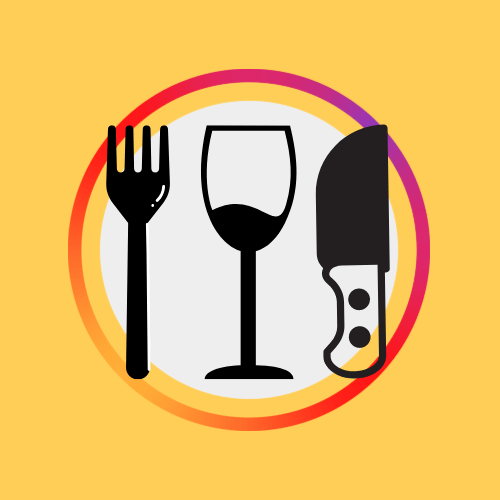If you’ve ever wondered how the history of French gastronomy became the world’s gold standard for eating well—this is your rabbit hole. From wild Gaulish feasts and Roman wine barrels to the rise of haute cuisine and the modern-day Michelin empire, this post traces the full, delicious evolution of French food.
Whether you’re a culinary historian, a terroir-obsessed traveler, or just someone who geeks out over Escoffier and a well-laced beurre blanc, you’re about to discover how French cuisine evolved into the sensual, structured, show-stopping ritual it is today.
This is our foundational deep dive into the Origins of French Food, a history as rich and layered as a mille-feuille.
We’re not here for fluff. This is for the history buffs, the kitchen obsessives, the terroir romantics—the ones who want to know exactly how French cuisine became the global benchmark for food with soul, precision, and swagger.
TL;DR: History of French Gastronomy to Sink Your Teeth Into
Yes, it’s a lot. No, we’re not sorry.
Ancient Gaul: Charcuterie Before It Was Cool
Long before France was France, it was Gaul—home to the Gauls, Aquitani, and Belgae. These Celtic tribes were roasting whole animals on spits, brewing barley beer called cervoise, and fermenting cheese and meats in cellars.
The Gauls didn’t write recipes, but Roman chroniclers painted a vivid picture: they loved meat, dairy, and salt. They invented the wooden barrel for wine and beer. They ate with their hands, sat on animal hides, and probably pioneered the first rustic picnic.
When Rome arrived (hello, 52 BC), Gaul became a gastronomic melting pot. Olive oil, spices, Mediterranean vegetables, and the concept of multi-course feasts filtered in. Roman kitchens brought ovens, copper pots, and new cooking styles—but the Gauls held onto their charcuterie and beer with pride.
Medieval France: Monks, Meatless Days, and Moldy Pies
The fall of Rome brought centuries of famine, faith, and feasting—depending on your social rank. Peasants ate gruel and dark bread. Monks farmed, fished, and quietly revolutionized cheesemaking. Royal courts roasted swans and created intricate molded pies stuffed with spiced meat.
Religion ruled the table. Fasting days meant no meat—so fish (especially herring), almond milk, and vegetables got creative upgrades. Monastic gardens became flavor labs. And slowly, food moved from survival to spectacle.
The 14th-century saw France’s first cookbooks: Le Viandier by Taillevent and Le Ménagier de Paris, a household guide written by a Parisian husband (bless). These texts revealed elaborate sauces, parboiled meats, and the first flickers of the art of French presentation.
Renaissance & Early Modern Era: Pastry, Printing Presses, and the Italian Invasion
Cue Catherine de Médicis, who (allegedly) brought forks, Florentine finesse, and pastry chefs to France. Whether that’s true or legend, the impact is real: sugar, artichokes, and aesthetic plating exploded in the 1500s.
Printed cookbooks started circulating. Tomatoes and potatoes arrived from the Americas (though France gave them the side-eye for centuries). The use of butter, cream, and wine-based sauces grew. And the fork finally joined the table.
The 17th century gave us François Pierre de La Varenne, whose 1651 book Le Cuisinier François set the stage for modern French cooking. He introduced roux, refined sauces, and a lighter, herb-forward style. Out with medieval excess, in with elegant restraint.
Enlightenment to Empire: Vive la Révolution (and the Restaurant)
The French Revolution toppled the monarchy and accidentally launched a culinary revolution. Suddenly, unemployed palace chefs opened restaurants—a concept just beginning to emerge.
Grimod de la Reynière published the first restaurant guide. Brillat-Savarin wrote The Physiology of Taste and coined, “Tell me what you eat, and I’ll tell you who you are.” Food became philosophy. Cuisine became national pride.
Enter Carême, the first celebrity chef, who codified sauces, built sugar sculptures, and made French cuisine a diplomatic tool.
19th Century: Escoffier, Empire, and the Birth of Haute Cuisine
Carême passed the torch to Auguste Escoffier, who created the kitchen brigade, simplified recipes, and co-authored Le Guide Culinaire. He brought order, discipline, and elegance to French gastronomy—all while inventing dishes like Pêche Melba and Crêpe Suzette.
At the same time, the Michelin Guide was born. Parisian restaurants flourished. Dumas (yes, that Dumas) wrote a food dictionary. Cuisine went from court to café to codified canon.
20th Century: Nouvelle Cuisine, TV Chefs & Bistronomie
After WWII, chefs like Fernand Point, Paul Bocuse, and the Troisgros brothers rebelled against heavy sauces and rigid menus. The result? Nouvelle Cuisine – lighter, seasonal, minimalist, and artistic.
Food critics like Gault & Millau championed this wave. Julia Child translated French cooking for America. Chefs became rockstars. And bistronomie emerged: haute cuisine in sneakers, served in cozy corners of Paris.
For more on how French eating habits have changed in the last 100 years, check out our full guide.
Today: From UNESCO to Instagram
In 2010, UNESCO recognized the gastronomic meal of the French as an intangible cultural treasure. Rightly so. Today, French chefs juggle tradition and innovation: molecular magic, plant-forward menus, global influences, and zero-waste ethics.
Whether it’s a Michelin-starred tasting menu or a crusty baguette with beurre demi-sel from the market, the story continues—one bite at a time.
Curious about how the French eat today? We’ve got you covered.
Hungry for More?
Explore our Origins of French Food section for deep dives into terroir, iconic ingredients, and forgotten food rituals.
Want to know what French terroir really means? Or what food Paris is actually known for? Start there.
And if you’re planning a trip, don’t miss our list of trusted restaurant guides and critics for the real insider scoop.
“French gastronomy isn’t just cuisine. It’s a conversation across centuries. One that begins in a smoky Gaulish hut and ends at your plate.”
Bon appétit, les geeks.
Love this? Get more real, unfiltered food stories straight to your inbox. No fluff, no spam—just damn good food writing and all for free!

From the bustling streets of Paris to the heat of a professional kitchen, my life has always revolved around food. A Brit who moved to France at 16, I trained as a chef in a Parisian palace kitchen at 18 and have spent decades cooking, eating, and living like the French.
By day, I run kitchens and events, but Eat Like The French is my side hustle—a way to share my passion for French food through writing and food tours. After a detour into tech recruitment, I returned to what I love most: cooking and storytelling—one dish, one tour, and one bite at a time.
📚 Further Reading on French Food History
Still hungry? Here’s your geek-approved reading list. These are the books, websites, and resources we trust to go deeper into the history of French food—from ancient Gaul to modern gastronomy. Bookmark it, gift it, hoard it like vintage mustard pots.
🧠 Essential Reads (Books)
- La Gastronomie Française by Patrick Rambourg – The definitive (and deliciously detailed) academic history of French cuisine. If you’re serious, start here.
- The Physiology of Taste by Brillat-Savarin – Part philosophy, part food memoir, all genius. A must-read if you want to understand the soul of French gastronomy.
- Larousse Gastronomique (Prosper Montagné) – The encyclopedia every French chef swears by. It’s as weighty as it is revered.
- French Gastronomy: The History and Geography of a Passion by Jean-Robert Pitte – A poetic but precise deep dive into how cuisine became central to French identity.
- The Grand Dictionnaire de Cuisine by Alexandre Dumas – Yes, the novelist. He also penned one hell of a culinary dictionary.
- The Escoffier Cookbook by Auguste Escoffier – The OG of modern French cooking. Still relevant. Still brilliant.
🗂️ Online Resources Worth a Bookmark
- 🇫🇷 Gallica – Bibliothèque nationale de France – Dive into original French culinary manuscripts, menus, and historical cookbooks. A feast for the curious.
- 🧾 UNESCO: Gastronomic Meal of the French – Why France’s food rituals made the cultural heritage list.
- 🥖 Eat Like The French – Origins of French Food – Our full archive exploring terroir, tradition, and how history still shapes what’s on your plate today.
- 🗺️ What is Terroir in French Food & Wine? – For when you need to explain why French tomatoes just taste better.
- 🥐 How French Eating Habits Have Changed in 100 Years – A century of shifts in what’s on the French table.
- 🍷 How the French Eat in 2025 – The latest evolution in a 2,000-year-old story.
- 🥖 What Food is Paris Known For? – Spoiler: It’s more than just baguettes and macarons.
“To know a culture, eat its history. To eat like the French, you need to know where they’ve been.”

